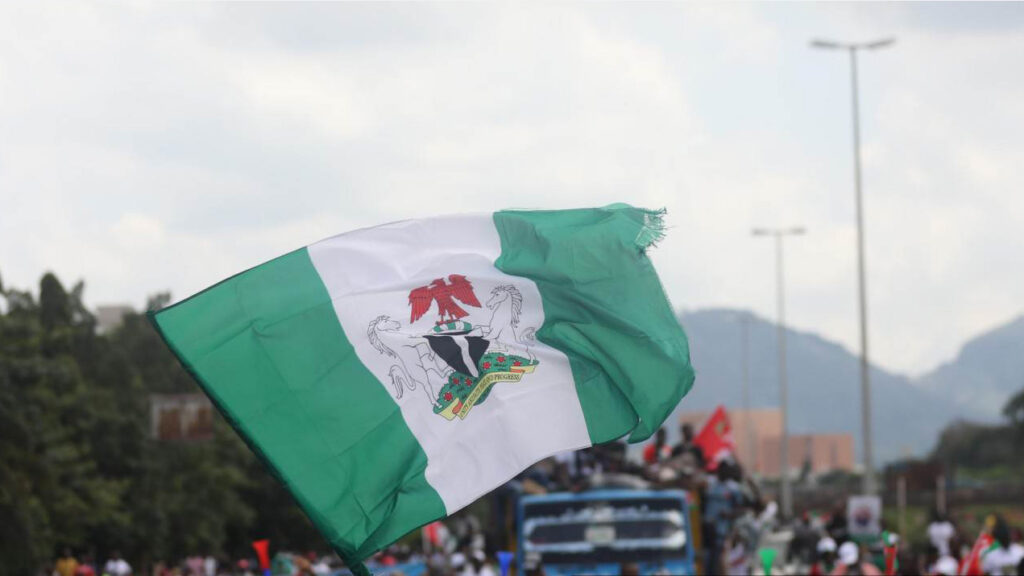
A National Anthem is one of the instruments of modern government. The lyrics are typically approved by the government and people as correctly expressing their history and national aspirations. It normally serves as an embellishment of the national personality to create national pride and endear the nation to the citizens. It is sung on important national, sub-national, sports and school events.
It lends importance, credence and solemnity to such events. Citizens sing it standing reverently and respectfully usually with their right palm on their left breast as a sign of meditative communion with the nation. A National Anthem amounts to the music of a national secular faith.
The lyrics and music are therefore at the very heart of the nation. Ideally, a National Anthem is a patriotic song aimed at galvanising national patriotism by socialising the citizenry and thus producing patriotic citizens. National Anthems are therefore not mere symbolic national cosmetics, but essential national spiritual instruments for national edification.
Even the monarchy-centred British National Anthem, which was adopted in September 1745, aimed at the edification of the nation using the monarchy as the rallying point.
National Anthems became very prominent in the 18th century.
Claude Joseph Rouget de Lisle wrote the poem of the French National Anthem in 1792. He also composed its music, which was adopted as the French National Anthem on July 14, 1795. It was a war song during the French revolution. It is no surprise, therefore, that Anne-Marie described it as “bold, catchy and revolutionary”.
It is a celebration of French chivalry and the popularisation of the French revolutionary triad of ‘liberty, equality and brotherhood’. Similarly, the American National Anthem was inspired by the victory over the British at Fort McHenry during the war of 1812.
The Anthem, “The Star-Spangled Banner” is a song based on the poem “The Defence of Fort McHenry”. No wonder it celebrates what is often described as elements of American character, namely: independence, bravery and heroism in such phrases as ‘land of the free’ and ‘home of the brave’. It was also Scott Key, the lyricist, who supplied the tune of a popular British song for his poem, which was officially adopted as the American National Anthem in 1931.
The Nigerian saga
The British acquired different parts of Nigeria either as colony or protectorate, by conquest or by treaty and coalesced them into Colony and Protectorate of Southern Nigeria and Protectorate of Northern Nigeria. In 1914, the two were amalgamated into one country called Nigeria. The name Nigeria was coined by Flora Shaw, the girl-friend of Lieutenant General Frederick Lugard, a boisterous officer, who was deployed to colonial service. After a stint in Uganda in which he introduced indirect rule, he was posted to Nigeria where he effected the amalgamation that was aimed at colonial balanced budgets rather than the integration of the two halves of Nigeria.
He then assumed the title of Governor-General although there were no Governors. In 1959, a year to the date set for Nigeria’s independence from colonial rule, an advert was posted for contestants to produce the National Anthem.
Over five hundred Nigerians submitted entries but paradoxically the lyric submitted by a British expatriate, Lilian Jean Williams was selected as the winning entry while the music competition was won by a British ballet musician, Frances Brenda.
As one would expect, Ezekiel Mphahlele recorded the criticism of Nigerians that the winners of the National Anthem were both Britons rather than Nigerians. It is contradictory, some people argued, that a very significant document for the independence of Nigeria from Britain was British-brewed.
It was therefore not an autochthonous document, which is a serious charge in independence matters as it would appear to detract from the independence of those who claim preparedness and readiness for independence if they could not prepare their own national Anthem.
By that date (1959), Nigeria had produced such literary giants like Chinua Achebe who had published the globally successful Things Fall Apart” and Wole Soyinka who had published and staged many plays including, in fact, the Independence Play, A Dance of the Forests. It could not have been that Nigeria, which went ahead to produce a Nobel Laureate in Literature and more than two hundred entries annually for the Nigerian Prize in Literature could not have produced a winning entry for the National Anthem. As it were, they were Britons who made the statement, “Nigeria We Hail Thee”.
The Anthem was in use from Independence in 1960 till 1978 when the military administration of General Obasanjo replaced it with “Arise O Compatriots” which was written by four Nigerians – John A. Ilechukwu, Eme Etim Akpan, Babatunde A. Ogunnaike, O Sola Omoigui, and P. O. Aderibigbe. The music was written by a Nigerian, B. E. Odiase. The second Anthem lasted forty-six years.
To be continued tomorrow.
Izevbaye, Emeritus Professor of English; Adeniran, Professor of Linguistics and Ayoade, Emeritus Professor of Political Science, wrote from University of Ibadan, Nigeria.













